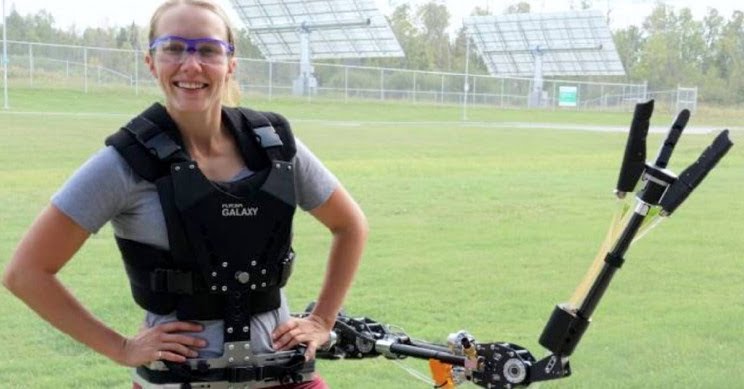Experienced robotics researchers at the Université de Sherbrooke in Canada have invented a remote-controlled hydraulic third arm.
The third robotic arm is mounted at the waist with a special belt. It is able to help the wearer in delicate tasks, but is equipped with enough strength to break through a wall.
It looks like one of those arms that came out of the back of that Spiderman enemy that I can't remember now. Edit: I have it. Doctor Octopus.
The robots are like this: ask for a hand, they give you your whole arm
The objective of the new offshoot, I read from the study, is to “mimic the performance of a human arm in a multitude of industrial and domestic applications.” It is known as supernumerary robotic arm (supernumbered robotic arm?).
How the third robotic arm works
The third robotic arm is hydraulic and operated by magnetorheological clutches and hydrostatic transmissions. It is specifically designed to provide plenty of power while minimizing the amount of mass the user has to wear.
It does this by connecting to the user via a cable. It weighs almost as much as a real human arm (about 4 kilograms) but can lift up to 5.
For the moment, it is not absolutely autonomous. You still need to control it through a second human, who guides the arm with a miniature handheld application.
Right now it works like a collaborator: perform the same task as the user in parallel or do something different in order to free the user to do things that require more creativity.
What can the third robotic arm do?
The possible applications of such a joint are many, but at this stage it is much more important to ensure mechanical stability.
Later the mechanism could simply "observe" the movement of the two human arms and apply the gesture to different scenarios. If you pick fruit, for example, it's one thing to imitate a gesture, but it's another thing to pick a piece of fruit that isn't exactly parallel to the one picked up by the human arm.
In any case, as mentioned, the main author of the study Catherine Veronneau currently has different things to think about.
“For now it's still not that bad to have this arm on my hips, since it's only 4,2kg (without payload) and is located close to my center of mass (to reduce inertia). I get used to it quickly and can compensate for some movements (x, y and z translational movements), but I still have some problems with twisting movements (like when the arm hits a tennis ball with a racket). We also noted that the harness needs to be rigidly connected to the body because if there is any play between the harness and the body, it can be uncomfortable. “


